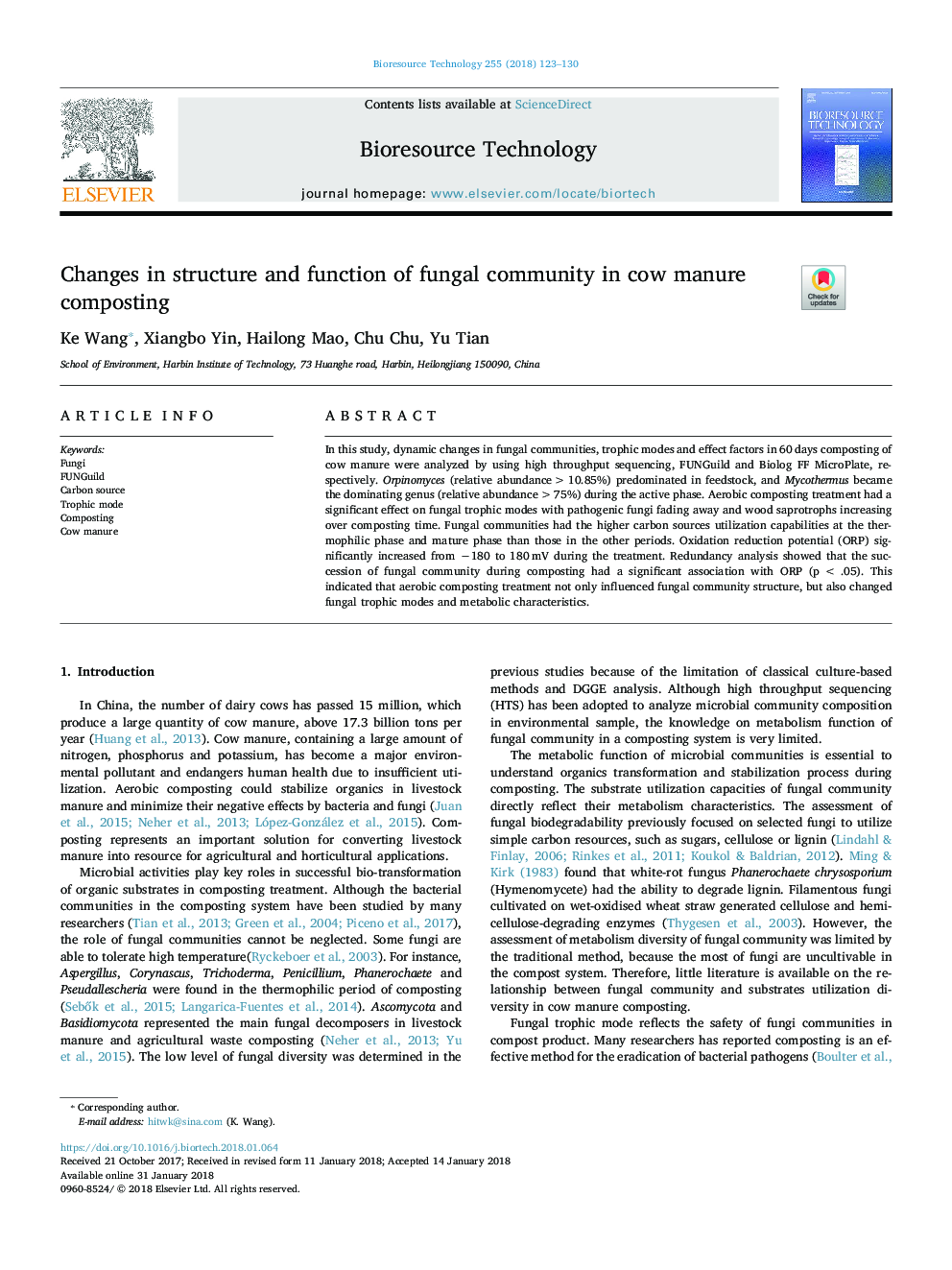| Article ID | Journal | Published Year | Pages | File Type |
|---|---|---|---|---|
| 7068039 | Bioresource Technology | 2018 | 8 Pages |
Abstract
In this study, dynamic changes in fungal communities, trophic modes and effect factors in 60â¯days composting of cow manure were analyzed by using high throughput sequencing, FUNGuild and Biolog FF MicroPlate, respectively. Orpinomyces (relative abundance >10.85%) predominated in feedstock, and Mycothermus became the dominating genus (relative abundance >75%) during the active phase. Aerobic composting treatment had a significant effect on fungal trophic modes with pathogenic fungi fading away and wood saprotrophs increasing over composting time. Fungal communities had the higher carbon sources utilization capabilities at the thermophilic phase and mature phase than those in the other periods. Oxidation reduction potential (ORP) significantly increased from â180 to 180â¯mV during the treatment. Redundancy analysis showed that the succession of fungal community during composting had a significant association with ORP (pâ¯<â¯.05). This indicated that aerobic composting treatment not only influenced fungal community structure, but also changed fungal trophic modes and metabolic characteristics.
Related Topics
Physical Sciences and Engineering
Chemical Engineering
Process Chemistry and Technology
Authors
Ke Wang, Xiangbo Yin, Hailong Mao, Chu Chu, Yu Tian,
